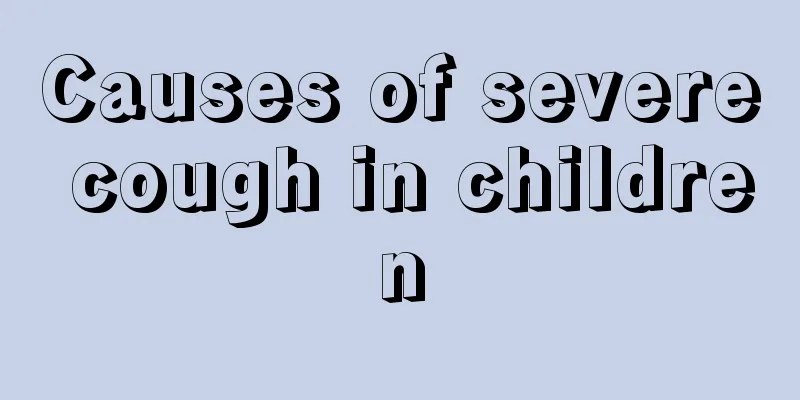Causes of neonatal death

|
Not all babies can be born safely. Many babies suffocate and die due to lack of oxygen during childbirth. After the baby is born, he or she will also undergo a health check to ensure that he or she is healthy before being able to go home with his or her parents. Some babies will be diagnosed with many diseases after they are born safely, so pregnant women should have regular prenatal checkups. If any disease is detected during pregnancy, a solution can be found in time. Also pay attention when your baby is sleeping, and do not cover the baby with a quilt that goes above the head. ① Common causes of death are Asphyxiation factors, infection, hemorrhagic diseases, deformities and obstetric factors, etc. ②Relationship between death and age The causes of death of newborns of different ages are also different. The causes of death of newborns within 24 hours are as follows: asphyxia, hemorrhagic diseases, premature birth, infectious diseases, malformations and obstetric factors. Newborns who die within seven days: asphyxiation, infectious diseases, hemorrhagic diseases, premature birth. Causes of death from 7 to 28 days: infectious diseases (infectious pneumonia, neonatal sepsis, encephalopathy), malformations, and bilirubin encephalopathy. ③Relationship between cause of death and gestational age The gestational age of premature infants is 29+5~36+5 weeks, and the causes of death are asphyxiation, hemorrhagic factors, infectious factors, and malformation, respectively; the gestational age of full-term infants is 37+1~41+6 weeks, and the causes of death are asphyxiation, infectious factors, hemorrhagic factors, malformation, and obstetric factors, respectively; the gestational age of post-term infants is 42+4 weeks, and the main cause of death is suffocation. ④ Time structure of neonatal death The mortality rate of early neonatal death (death within 7 days of birth) is significantly higher than that of late neonatal death (death between 7 and 28 days). ⑤ Gender composition of neonatal mortality The mortality rate of male newborns is significantly higher than that of female newborns. ⑥Neonatal asphyxia is mostly a continuation of intrauterine asphyxia. Abnormal factors during the mother's pregnancy can cause fetal intrauterine hypoxia. Therefore, it is necessary to strengthen pregnancy care, conduct regular postpartum check-ups, and teach pregnant mothers to self-detect fetal movements. Use a stethoscope to listen to the fetal heart rate and seek medical attention in a timely manner if any problems are found. At the same time, strengthen cooperation between obstetricians and neonatologists to jointly and accurately carry out new methods of resuscitation. Strengthen neonatal care after resuscitation to reduce neonatal mortality. Neonatal asphyxia is caused by hypoxia and ischemia of the fetus and newborn during intrauterine delivery. It is the main cause of perinatal death and brain damage. The longer the hypoxia lasts, the greater the brain damage. |
<<: Symptoms of inguinal hernia in children
>>: Intestinal malrotation in the newborn
Recommend
Children with cold hands and feet and fever
We all know that babies often have fever when the...
What causes diarrhea in children?
Children at home are the apple of their parents’ ...
Why does my child cry when he sleeps?
Many children will have trouble sleeping, and eve...
What is the most accurate way to test for tuberculosis in children?
Children have relatively poor physical resistance...
Will children become stupid after drinking a little red wine?
Red wine is a common thing in daily life. Drinkin...
What should I pay attention to when my child has diarrhea and pain in the buttocks?
We know that healthy children's stools are of...
Can girls grow taller after puberty?
Children nowadays are very tall because the livin...
What medicine should a one-year-old baby take for a cold?
Because one-year-old babies have lower immunity a...
How to clean baby's mouth
When the baby is young, parents must pay attentio...
Children's urticaria folk remedies
Urticaria must be treated as early as possible, o...
What should children pay attention to in their diet when their eyesight is declining?
In the eyes of many parents, the problem of decre...
What are the ways to make babies grow taller?
Nowadays, parents are particularly concerned abou...
What can primary school students eat for breakfast to nourish their brains?
Nutrition and health experts have found that some...
What to eat to improve children's memory
People's memory tends to decline over time. T...
Why is the baby easily startled when sleeping?
Many mothers report that their babies are too tim...









